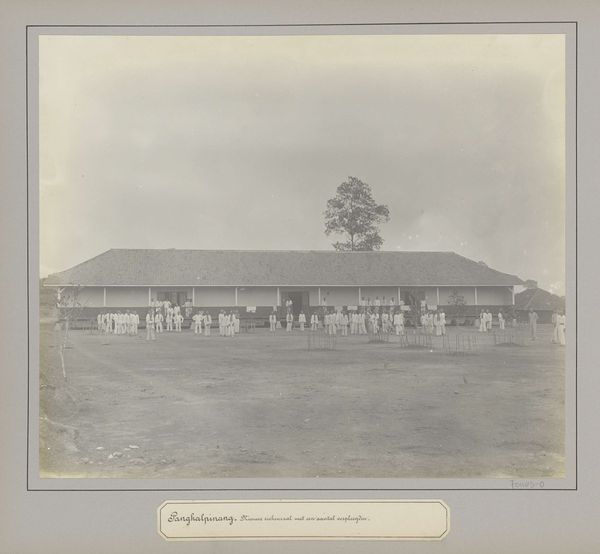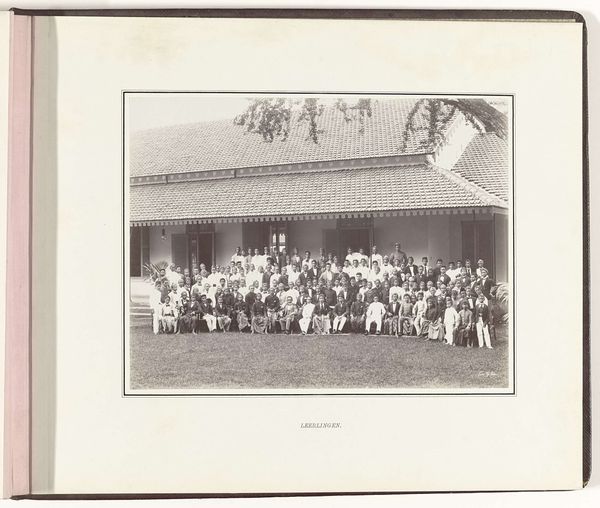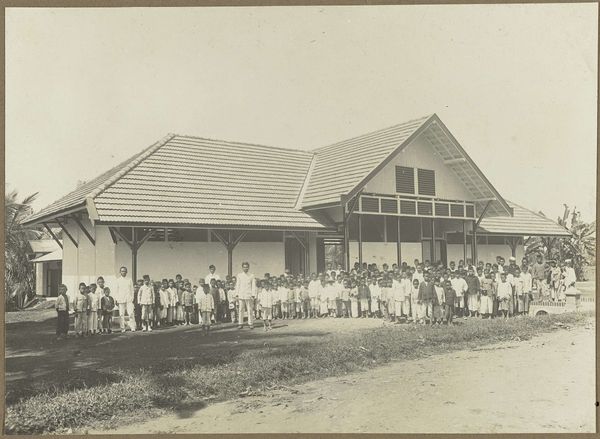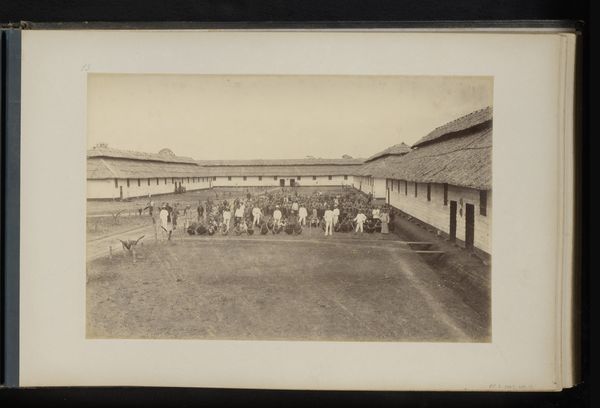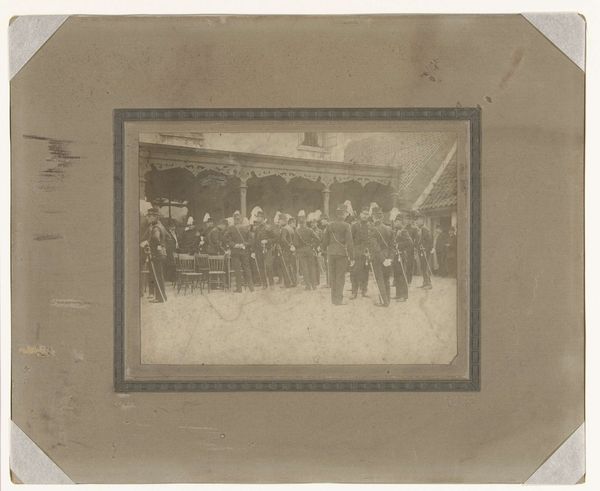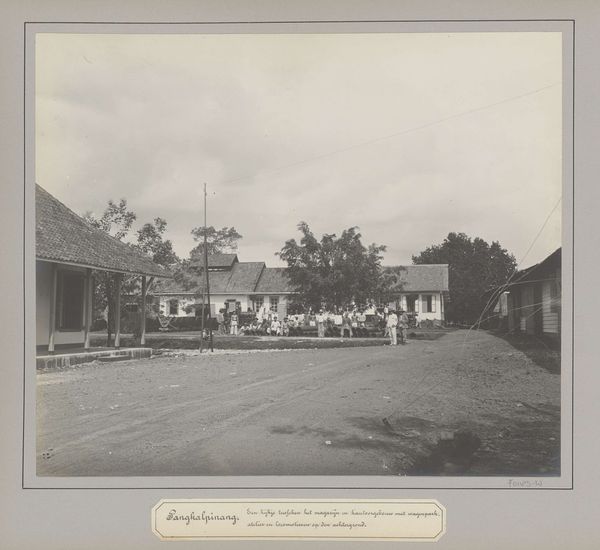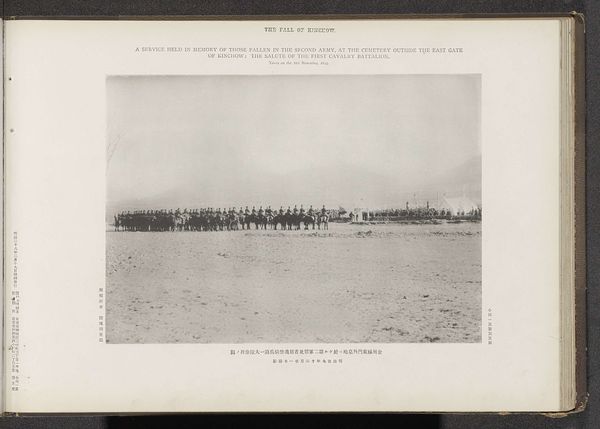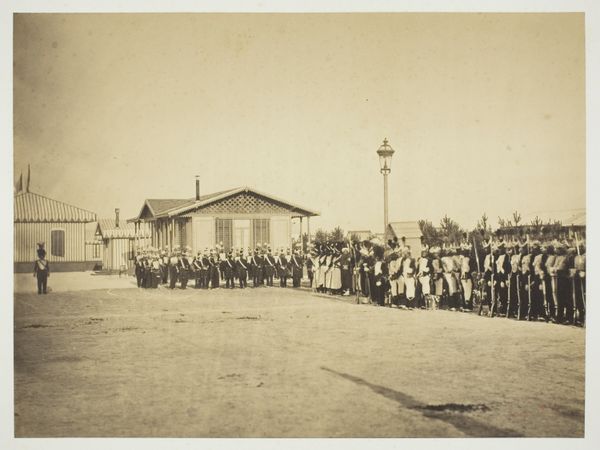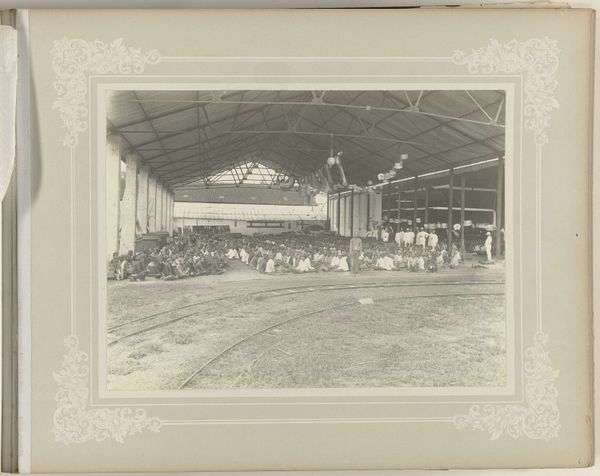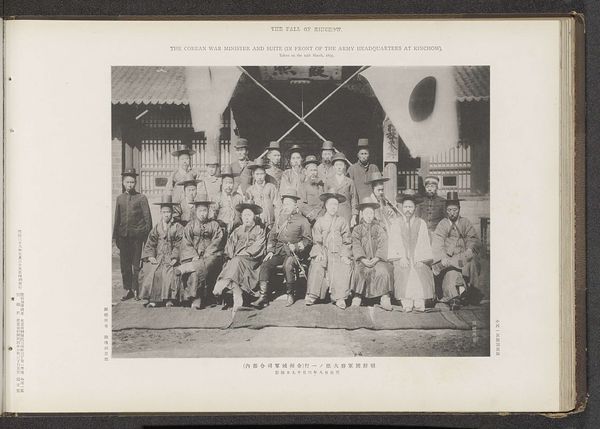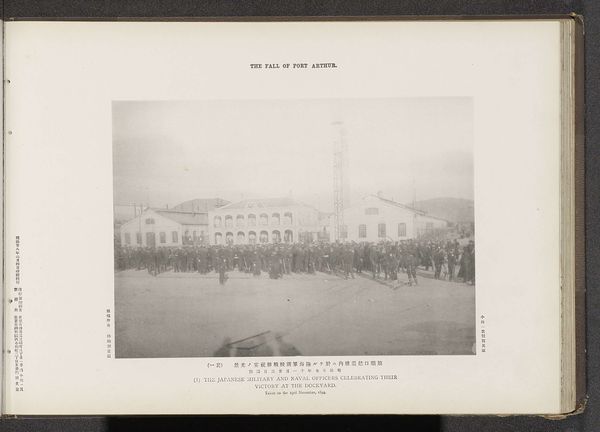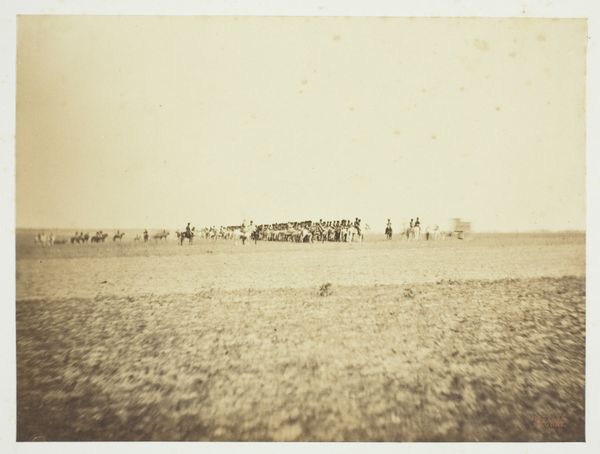
Werknemers van een tinonderneming te Pangkalpinang voor een barak c. 1900 - 1920
0:00
0:00
photography
#
portrait
#
landscape
#
indigenism
#
photography
Dimensions: height 240 mm, width 285 mm
Copyright: Rijks Museum: Open Domain
Editor: This photograph, titled "Workers of a tin company in Pangkalpinang in front of a barracks", was taken sometime between 1900 and 1920. It’s striking how the vast landscape and building dwarf the group of workers, who seem posed and slightly out of focus. What historical narratives do you see emerging from this image? Curator: This image offers a stark depiction of labor and colonialism in the early 20th century. We see not just a portrait but an illustration of power dynamics. The large barracks building looming behind the workers signifies the institutional control exerted by the tin company. It prompts questions about labor conditions, exploitation, and the overall socio-economic structure of the time. Do you notice how the figures seem almost regimented in their positioning? Editor: Yes, it almost feels staged. The composition leads you to focus on the relationship between the workers and this almost oppressive structure behind them. Curator: Precisely. The photo’s setting invites reflection on the public role of art – how images like these circulated and what purposes they served. Was it meant to document, to advertise, or perhaps to subtly reinforce a colonial order? The choice to highlight these workers *en masse* suggests a certain perspective, one we must critically examine today. Editor: It’s amazing how a seemingly straightforward image can reveal so much about the historical and cultural context. Curator: Indeed. Thinking about how institutions like the Rijksmuseum choose to display and interpret such images today is also crucial. It demonstrates how our understanding of history is constantly evolving, challenged, and reshaped by art and its presentation. Editor: Thank you for bringing these issues to my attention; this has changed how I look at historical photos. Curator: And I am glad for this learning exchange and the chance to consider such important implications together.
Comments
No comments
Be the first to comment and join the conversation on the ultimate creative platform.
